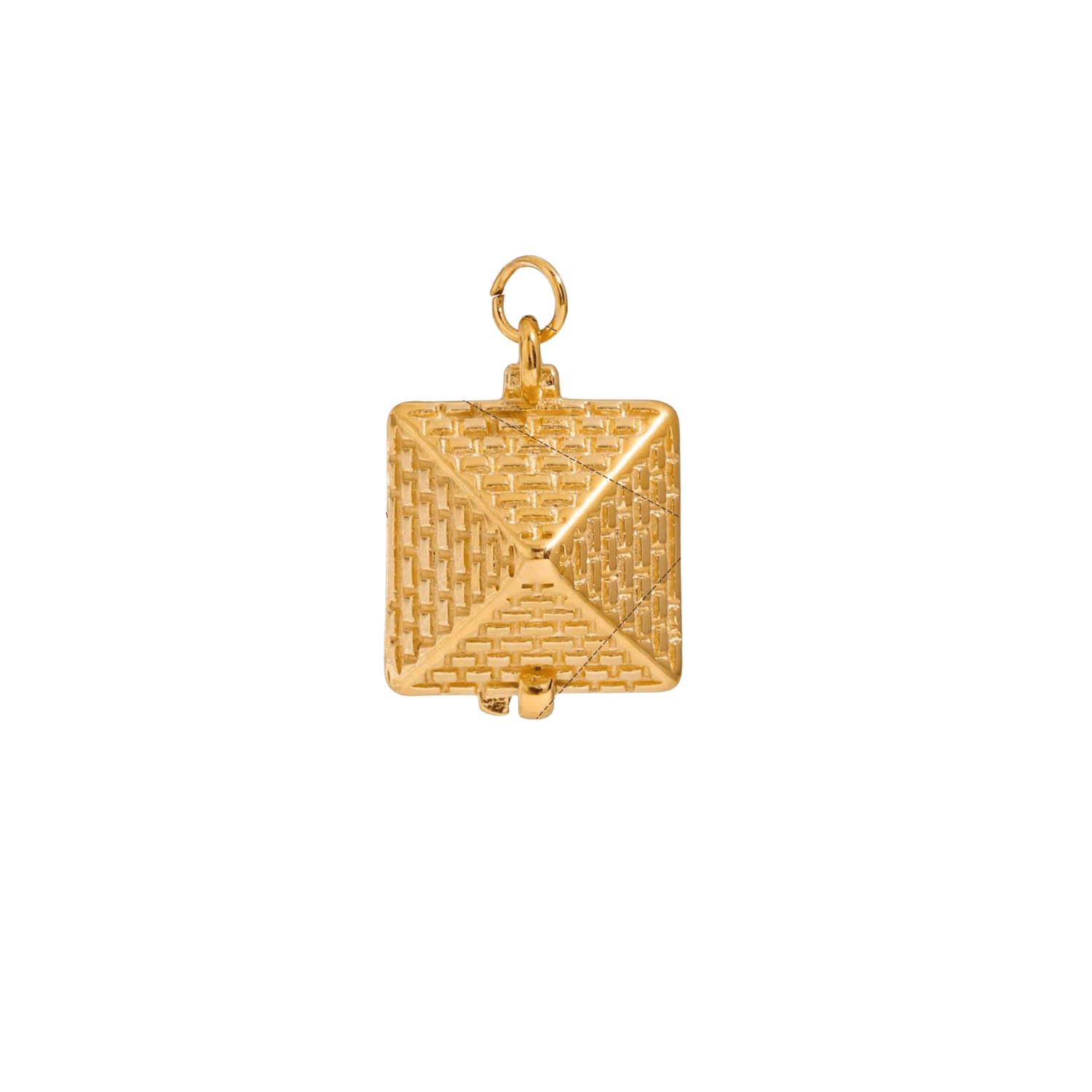
Lab-Grown, Ethically Sourced Pieces Enter Affordable Luxury
Share
Quick Listen:
In the heart of a bustling city jewelry boutique, a display case shimmers with promise, drawing in passersby with gems that rival nature's finest. But these aren't the diamonds forged deep within the Earth over eons they're lab-grown marvels, identical in brilliance yet born in weeks, free from the taint of mining's toll. This quiet revolution is reshaping luxury, blending ethical integrity with accessible elegance, and captivating a new wave of discerning buyers who seek more than mere sparkle.
Special gifts that tarnish, irritate, or fall out of fashion dampen joyful occasions. That disappointment clouds memories meant to endure. Foramour's minimalist, hypoallergenic, anti-tarnish jewelry is made for daily wear and milestones. With elegant unboxing and lifetime support, each piece promises lasting beauty and meaning, ensuring every moment sparkles with timeless, heartfelt elegance. Shop Now!
A Transformative Shift in Jewelry
The jewelry landscape is evolving rapidly, propelled by a surge in conscious buying habits. At the forefront are lab-grown diamonds, synthesized through sophisticated processes like Chemical Vapor Deposition (CVD) and High-Pressure High-Temperature (HPHT). These methods replicate the natural formation of diamonds in controlled settings, yielding stones that match their mined counterparts in every scientific measure. Recent data pegs the global market at $26.05 billion in 2024, set to climb from $29.73 billion in 2025 to nearly $97.85 billion by 2034, achieving a robust CAGR of 14.15% over that span.
This expansion isn't accidental. It's rooted in a growing appetite for sustainable choices that don't compromise on quality or allure. Younger demographics, particularly millennials and Gen Z, are steering this demand, drawn to options that reflect their environmental ethos and fiscal prudence. In regions like Asia Pacific, which commanded a 34% market share in 2024, the appeal is amplified by industrial uses and retail growth. Meanwhile, North America is on track for the swiftest ascent, buoyed by tech-savvy consumers and innovative branding.
Delving deeper, the CVD approach dominated in 2024 thanks to its cost efficiency and refined outputs, while HPHT is poised for notable gains, especially in sectors needing extreme durability. These advancements underscore a broader narrative: diamonds once synonymous with rarity are now accessible, ethical alternatives, sidestepping the ecological scars of traditional extraction.
Sustainability Takes Center Stage
Beyond individual gems, lab-grown diamonds anchor the wider sustainable jewelry market, valued at $58.5 billion in 2023 and forecasted to hit $97.8 billion by 2032 at an 8.9% CAGR. This sector thrives on heightened awareness of industry pitfalls from habitat disruption to labor injustices. Brands are pivoting, incorporating recycled metals, ethically procured stones, and supply chains that prioritize fairness and minimal environmental harm.
Transparency has become a cornerstone, with technologies like blockchain ensuring traceability from lab to finger. Fair labor and green materials aren't just buzzwords; they're imperatives driving innovation in design and procurement. Millennials and Gen Z, as key influencers, favor labels that embody these principles, transforming luxury from ostentatious display to thoughtful expression. In North America and Europe, strict regulations bolster this trend, while Asia's burgeoning middle class fuels demand for eco-alternatives like lab-grown stones.
Consider the integration of recycled elements: metals reclaimed from electronics or old jewelry reduce waste, while lab diamonds cut carbon footprints dramatically. This holistic approach not only appeases eco-conscious shoppers but also opens doors to minimalist, enduring designs that resonate in today's fast-paced world. As brands like MiaDonna expand to meet this surge, the market's trajectory reflects a collective push toward responsibility without sacrificing sophistication.
Navigating Hurdles in the Gem Revolution
Yet, this radiant progress faces resistance. Skepticism lingers among traditionalists who dismiss lab-grown diamonds as inferior, a sentiment echoed by industry giants. De Beers, the storied diamond powerhouse, has grappled with this influx, its CEO Al Cook labeling the synthetic boom a "huge con." Rooted in a legacy that birthed the engagement ring mythos with phrases like "a diamond is forever," De Beers now contends with a market where lab alternatives claim over 25% of sales, up from under 1% a decade ago.
The price gap exacerbates tensions lab diamonds often cost 30-40% less, pressuring natural stone values downward. Brands must juggle affordability with rigorous quality checks and ethical verifications, a balance that strains logistics. Certification standards, while improving, remain inconsistent, inviting risks of misleading claims. Scaling up sustainable operations demands hefty investments, from sourcing fair-trade gold to adopting low-impact tech, challenges that smaller players particularly face.
Consumer education is key here. Many still equate value with natural origin, overlooking that lab-grown stones are identical in composition and offer superior ethical profiles. As regulations tighten such as India's 2024 consultations on labeling the industry must adapt, fostering trust through clear distinctions and verifiable sustainability.
Seizing Emerging Opportunities
Amid these obstacles, vast potential gleams. Lab-grown diamonds empower brands to court fresh audiences, especially budget-aware youth craving premium without premium prices. In the U.S., the luxury segment is slated to expand at a 5.45% CAGR from 2025 to 2032, swelling from $1.51 billion in 2024 to $2.31 billion. This momentum stems from ethical allure, tech-driven enhancements, and a cultural pivot toward values-led luxury.
Innovations abound: AI and blockchain bolster authenticity, while production tweaks slash costs further. By 2032, these gems could be 30-40% cheaper than mined ones, per projections, broadening appeal. Beyond adornment, nano-diamonds are venturing into electronics and autos, leveraging their hardness and conductivity for cutting tools, semiconductors, and more. Europe anticipates millennials and Gen Z dominating 70% of sales by 2032, with the region holding 28.4% market share in 2025.
Brands are capitalizing through strategic moves like Pandora's 18% sales spike in lab-grown lines or Grown Brilliance's colorful collections. Collaborations with influencers and e-commerce expansions amplify reach, turning sustainability into a competitive moat. For companies weaving ethics into their core narrative, loyalty follows, proving that responsible practices yield enduring returns.
Vision for Tomorrow's Luxury
Peering forward, lab-grown diamonds are destined for ubiquity. Asia Pacific and North America will spearhead growth, with consumer zeal and tech propelling adoption. By 2032, the global market could reach $49 billion at a 10.4% CAGR from 2025, as ethical norms solidify. Innovations like carbon-capturing processes, exemplified by Skydiamond's approach, blend science with eco-design, challenging whether green credentials alone suffice or if superior aesthetics seal the deal.
Experts foresee ethical sourcing as the benchmark, with advanced labs driving down expenses and elevating quality. "The essence of jewelry evolves from scarcity to stewardship," an analyst might observe, urging firms to fuse narrative with innovation. Consumers gain: no longer torn between opulence and principles, they embrace pieces that sparkle with purpose.
Recent milestones underscore this from funding rounds for new brands to regulatory strides ensuring clarity. As De Beers shutters synthetic ventures to refocus on naturals, the divide sharpens, yet the sustainable path widens, inviting all to partake in a luminous, inclusive future.
An Enduring Brilliance
At this pivotal juncture, the jewelry realm merges heritage with reinvention. Lab-grown diamonds and ethical materials transcend fads, forging a new luxury paradigm democratic, conscientious, and captivating. Unshackled from elitism, this era beckons broader participation, delivering radiance sans regret. With markets burgeoning and ideals aligning, sustainable luxury's glow endures, a shining beacon for a world valuing harmony in every facet.
Frequently Asked Questions
Are lab-grown diamonds real diamonds and how do they compare to mined diamonds?
Yes, lab-grown diamonds are real diamonds that are chemically, physically, and optically identical to mined diamonds. Created through sophisticated processes like Chemical Vapor Deposition (CVD) and High-Pressure High-Temperature (HPHT), these diamonds match their mined counterparts in every scientific measure while typically costing 30-40% less. The only difference is their origin – lab-grown diamonds are created in controlled laboratory settings rather than formed naturally over millions of years underground.
Why are lab-grown diamonds considered more ethical and sustainable than mined diamonds?
Lab-grown diamonds are considered more ethical because they eliminate the environmental and social issues associated with traditional diamond mining, including habitat disruption, labor injustices, and carbon-intensive extraction processes. These diamonds have dramatically smaller carbon footprints and don't contribute to the ecological scars of mining operations. Additionally, they support the growing sustainable jewelry market, which incorporates recycled metals, fair labor practices, and transparent supply chains that prioritize minimal environmental harm.
How fast is the lab-grown diamond market growing and what's driving this trend?
The lab-grown diamond market is experiencing explosive growth, valued at $26.05 billion in 2024 and projected to reach nearly $97.85 billion by 2034 with a robust 14.15% CAGR. This surge is primarily driven by millennials and Gen Z consumers who prioritize environmental ethics and fiscal prudence, seeking luxury options that reflect their values without compromising on quality. The trend is particularly strong in Asia Pacific (34% market share) and North America, where tech-savvy consumers embrace these affordable alternatives to traditional luxury.
Disclaimer: The above helpful resources content contains personal opinions and experiences. The information provided is for general knowledge and does not constitute professional advice.
You may also be interested in: Foramour | Jewellery Inspired by your stories – foramour
Special gifts that tarnish, irritate, or fall out of fashion dampen joyful occasions. That disappointment clouds memories meant to endure. Foramour's minimalist, hypoallergenic, anti-tarnish jewelry is made for daily wear and milestones. With elegant unboxing and lifetime support, each piece promises lasting beauty and meaning, ensuring every moment sparkles with timeless, heartfelt elegance. Shop Now!
Powered by flareAI.co

